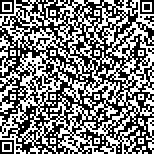周璇,杜青,梁菊萍,陈楠,杨晓颜,于虹.脊柱侧凸特定运动疗法治疗轻度青少年特发性脊柱侧凸患者的疗效观察[J].中华物理医学与康复杂志,2016,38(12):927-932
扫码阅读全文

|
| 脊柱侧凸特定运动疗法治疗轻度青少年特发性脊柱侧凸患者的疗效观察 |
|
| |
| DOI: |
| 中文关键词: 青少年特发性脊柱侧凸 轻度 脊柱侧凸特定运动疗法 康复 |
| 英文关键词: Adolescent idiopathic scoliosis Scoliosis Exercise Rehabilitation |
| 基金项目:上海市科委中医重点项目(13401903400);上海市卫生计生系统重要薄弱学科建设项目(2015ZB0406);上海市残联系统康复人才培养三年行动计划优秀学科带头人项目 |
|
| 摘要点击次数: 2432 |
| 全文下载次数: 4344 |
| 中文摘要: |
| 目的探讨以脊柱侧凸特定运动疗法为核心的康复干预对轻度特发性脊柱侧凸患者的疗效。 方法将30例轻度特发性脊柱侧凸患者分为观察组及康复治疗组。观察组患者给予常规健康宣教,康复治疗组患者给予脊柱侧凸特定运动疗法治疗,每周训练2~3次,每次治疗60min,共治疗12周。比较治疗前、后2组患者躯干旋转角度、冠状面Cobb角、椎体旋转角度、静态平衡功能(跌倒指数)、骨强度[包括桡骨远端声速(SOS)、Z值、百分位等指标]、竖脊肌表面肌电信号、肺功能[用力肺活量(FVC)、第一秒用力呼气量(FEV1)、用力肺活量占预计值百分比(FVC/Pred%)、第一秒用力呼气容积占预计值百分比(FEV1 pred%)、用力呼气量占用力肺活量比值(FEV1/FVC%)]、生活质量改善情况等。 结果与治疗前比较,观察组患者治疗后最大Cobb角显著增大(P<0.01),治疗前、后躯干旋转角度、椎体旋转角度、跌倒指数、SOS、Z值、百分位、FVC、FEV1、FVC pred%、FEV1 pred%、FEV1/FVC%及生活质量各维度得分差异均无统计学意义(P<0.05),治疗前、后顶椎水平竖脊肌凹侧激活率均显著小于凸侧激活率(P<0.01)。康复治疗组治疗前、后躯干旋转角、最大Cobb角、椎体旋转角度、跌倒指数差异均无统计学意义(P>0.05),治疗后骨强度SOS、Z值、百分位、FVC、FEV1、功能活动维度得分均显著优于治疗前水平(P<0.05),治疗前顶椎水平竖脊肌凹侧激活率小于凸侧(P<0.05),治疗后双侧顶椎水平竖脊肌激活率间差异无统计学意义(P>0.05)。 结论早期进行以脊柱侧凸特定运动疗法为核心的康复治疗可阻止轻度青少年特发性脊柱侧凸患者侧凸畸形进展,提高骨强度,改善肺功能,减少双侧竖脊肌肌肉运动控制差异,提高患者生活质量,该疗法值得临床推广、应用。 |
| 英文摘要: |
| Objective To explore the effect of scoliosis-specific exercises (SSE) on patients with mild adolescent idiopathic scoliosis (AIS). MethodsThirty patients with mild AIS were assigned to a control group (n=10) or an SSE group (n=20). The control group received routine health education, while the SSE group completed a 60-minute set of SSE 2 to 3 times a week for 12 weeks. The angle of trunk rotation (ATR), maximum Cobb angle and angle of vertebral rotation (AVR) were recorded. Bone strength parameters including the speed of sound (SOS), Z-score and percentile distal radius were measured. Surface electromyography (sEMG) was performed for the erector spinae muscle. In addition, forced vital capacity (FVC) and forced expiratory volume in one second (FEV1) were measured and compared with the predicted values (FVC/pred% and FEV1pred%). A falling index (FI) and quality of life (QOL) were measured. ResultsCompared with before the treatment, the average maximum Cobb angle in the control group increased significantly after the lessons, but there was no significant difference in any of the other measures, including QOL. For the control group the activation rate of the concave side of the apex level erector spinae was significantly lower than on the convex side both before and after the lessons. The SSE group showed no significant improvement in their average ATR, maximum Cobb angle, AVR or FI results, but their average SOS, Z-score and percentile of the distal radius, FVC, FEV1 and motor function improved significantly after the treatment. Before the treatment the activation rate of their concave side was also lower than on the convex side, but after the treatment there was no significant difference between them on average. ConclusionEarly SSE can prevent further deformation, promote bone strength, improve lung function reduce the difference in the motor control of the bilateral erector spinae muscles among patients with mild AIS. It can promote a better quality of life and is worth applying in clinical practice. |
|
查看全文
查看/发表评论 下载PDF阅读器 |
| 关闭 |
|
|
|